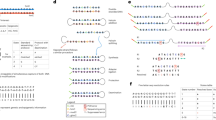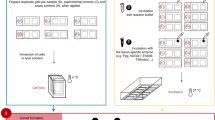Abstract
THE mutagenic action of the electrophilic alkylating agents has been attributed to many different causes. For Alexander and Stacey1, the alkylation of the DNA phosphates could be sufficient to induce mutations; but these could also be the consequence of the hydrolysis of the very unstable triester phosphate formed, with rupture of the macromolecule followed by large deletions. Lawley and Brookes2 have postulated that the 7-alkylation of guanine makes this base couple with thymine instead of cytosine and so is responsible for transitions. But the alkylation of the guanine and adenine residues can also be followed by the loss of the alkylated base3; this depurination might act in two ways: the hole left gives the opportunity for transitions, transversions or nucleotide deletions when, the DNA replicates, or the DNA sugar-phosphate ‘backbone’ can break with loss of a part of the chain. All these chemical mechanisms damage only one helix of the DNA molecule exposed to the mono- or bi-functional alkylating drug and the mutation ought to appear only in one half of the genomes of the following generations.
This is a preview of subscription content, access via your institution
Access options
Subscribe to this journal
Receive 51 print issues and online access
$199.00 per year
only $3.90 per issue
Buy this article
- Purchase on Springer Link
- Instant access to full article PDF
Prices may be subject to local taxes which are calculated during checkout
Similar content being viewed by others
References
Alexander, P., and Stacey, K. A., Ann. N.Y. Acad. Sci., 68, 1225 (1958).
Lawley, P. D., and Brookes, P., J. Mol. Biol., 4, 216 (1962).
Bautz, E., and Freese, E. Proc. U.S. Nat. Acad. Sci., 46, 1585 (1960).
Verly, W. G., Dewandre, A., Moutschen-Dahmen, J., and Moutschen-Dahmen, M., J. Mol. Biol., 6, 175 (1963).
Alexander, P., Lett, J. T., and Parkins, G., Biochim. Biophys. Acta, 48, 423 (1961).
Wyatt, G. R., Biochem. J., 48, 584 (1951).
Brookes, P., and Lawley, P. D., Biochem. J., 77, 478 (1960).
Jacob, F., and Monod, J., J. Mol. Biol., 3, 318 (1961).
Author information
Authors and Affiliations
Rights and permissions
About this article
Cite this article
VERLY, W., PETITPAS-DEWANDRE, A. Utilization of Labelled ‘Myleran’ for the Determination of the Size of DNA Molecules in Cells. Nature 203, 865–867 (1964). https://doi.org/10.1038/203865b0
Issue Date:
DOI: https://doi.org/10.1038/203865b0
Comments
By submitting a comment you agree to abide by our Terms and Community Guidelines. If you find something abusive or that does not comply with our terms or guidelines please flag it as inappropriate.



